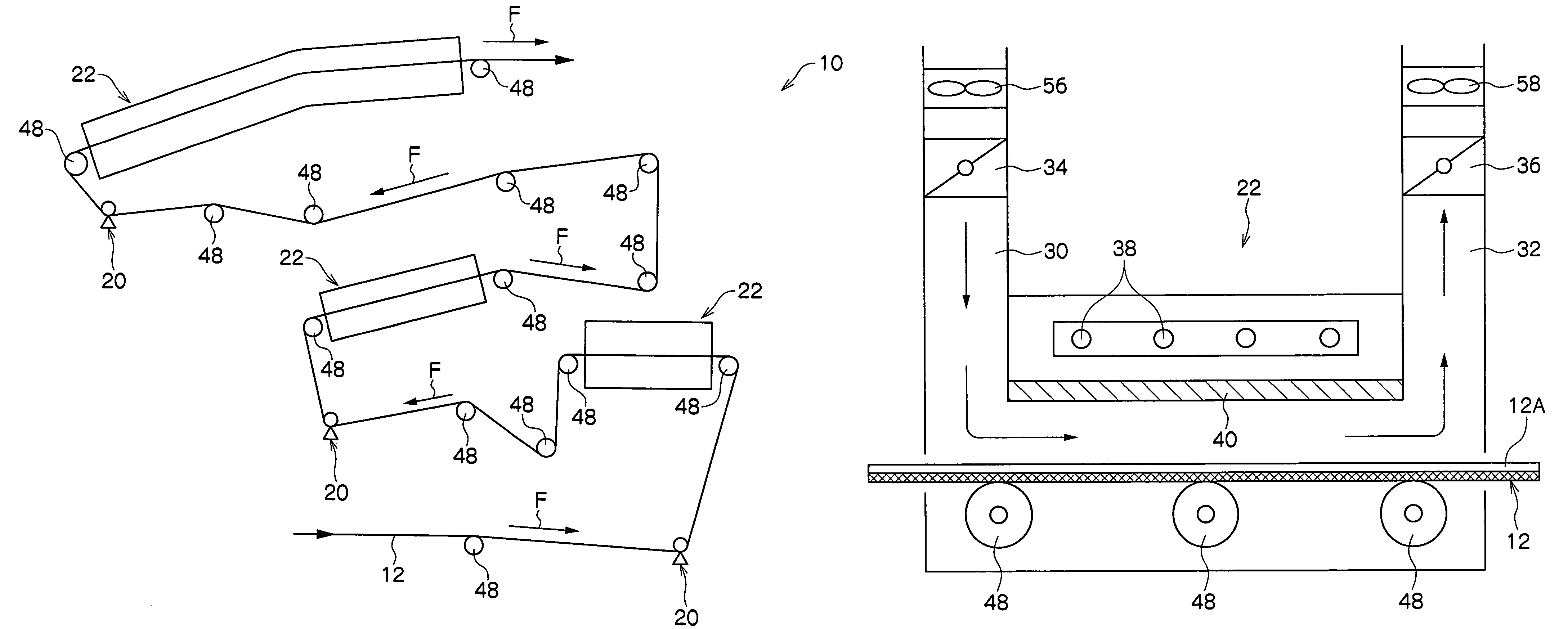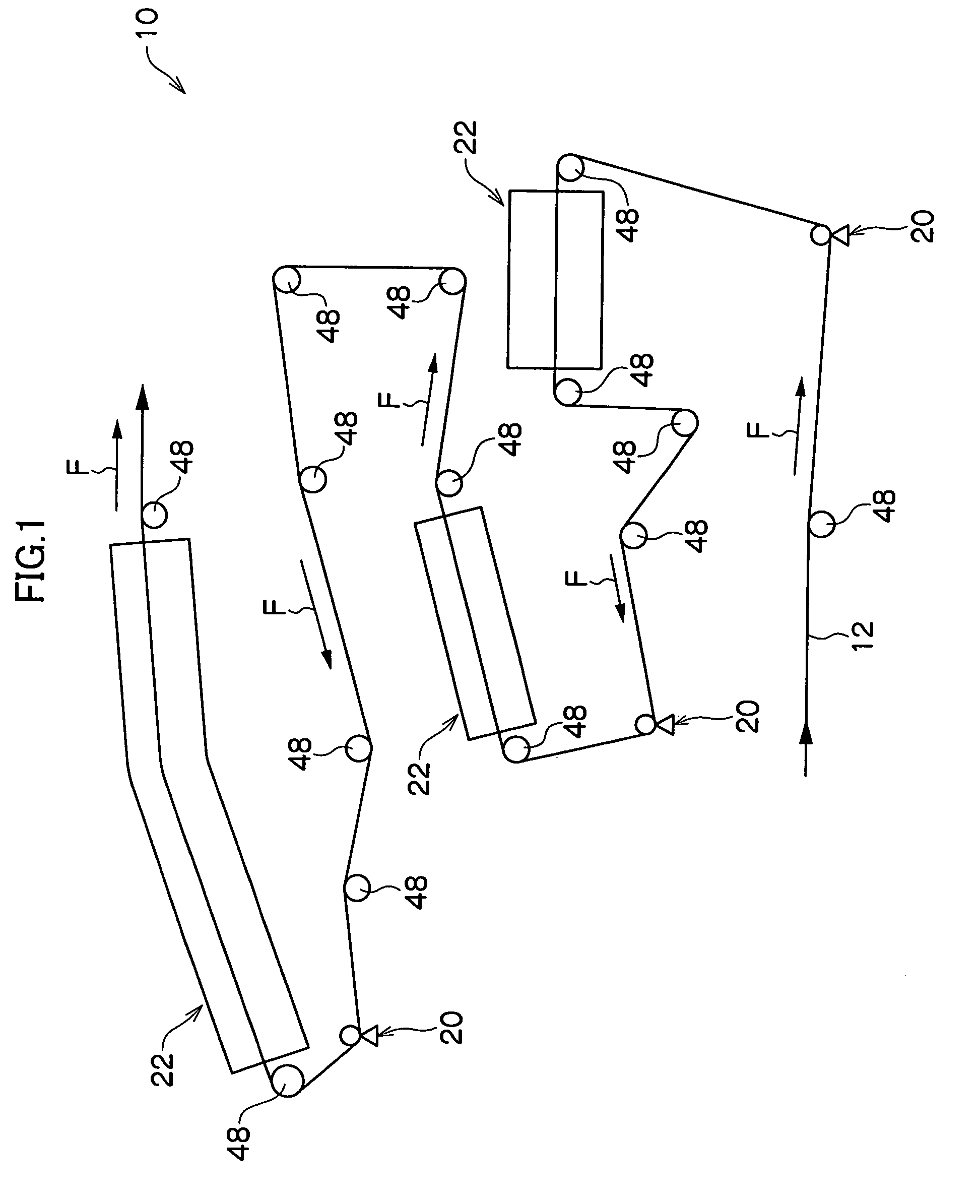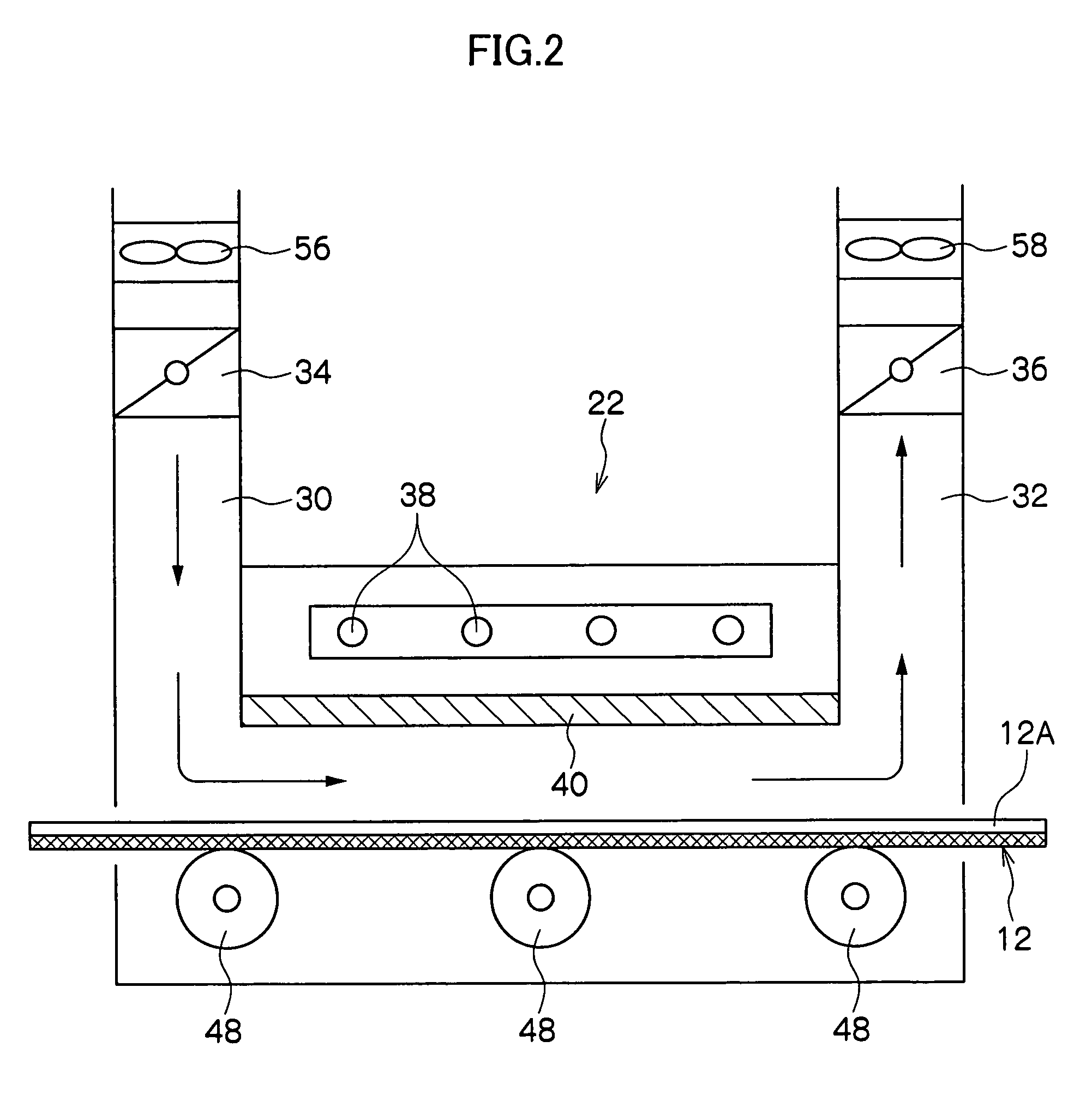Drying device and drying method
a drying device and drying method technology, applied in the direction of drying machines with progressive movements, photosensitive materials, furnaces, etc., can solve the problems of deteriorating production efficiency, insatiable heating efficiency, and fogged photosensitive layer on the photosensitive planographic printing plate, so as to achieve the effect of preventing the fogged photosensitive layer and achieving heating efficiency
- Summary
- Abstract
- Description
- Claims
- Application Information
AI Technical Summary
Benefits of technology
Problems solved by technology
Method used
Image
Examples
example
[0056]The surface of the web 12, which is a belt-shaped aluminum plate, is subject to a mechanical surface roughening process, a chemical etching process, an electrolytic surface roughening process, and an anodizing process. As a result, a substrate whose average surface roughness Ra is 0.48 μm is prepared. A positive planographic printing plate coating liquid is applied to the web 12 and is dried.
[0057]Table 1 shows the influence of the respective absence or presence of the filter 40 shown in FIGS. 2 and 3 upon the photosensitive coating layer 12A.
[0058]
TABLE 1Without filterWith filterBlocking rate of——Not lessnot lesswavelengths of notthan 25%than 30%more than 1 μmSeparation——10 mm10 mmdistance betweeninfrared radiatorsand filterSurface1000° C.200° C.1000° C.1000° C.temperature ofmid-far-mid-mid-infrared radiatorsinfraredinfraredinfraredinfraredraysraysraysraysOccurrence / non-Present onNonePresent onNoneoccurrence ofentirepart offoggingsurfacesurfaceDrying time8 seconds1810 seconds...
PUM
| Property | Measurement | Unit |
|---|---|---|
| wavelength | aaaaa | aaaaa |
| energy wavelength | aaaaa | aaaaa |
| separation distance | aaaaa | aaaaa |
Abstract
Description
Claims
Application Information
 Login to View More
Login to View More - R&D
- Intellectual Property
- Life Sciences
- Materials
- Tech Scout
- Unparalleled Data Quality
- Higher Quality Content
- 60% Fewer Hallucinations
Browse by: Latest US Patents, China's latest patents, Technical Efficacy Thesaurus, Application Domain, Technology Topic, Popular Technical Reports.
© 2025 PatSnap. All rights reserved.Legal|Privacy policy|Modern Slavery Act Transparency Statement|Sitemap|About US| Contact US: help@patsnap.com



